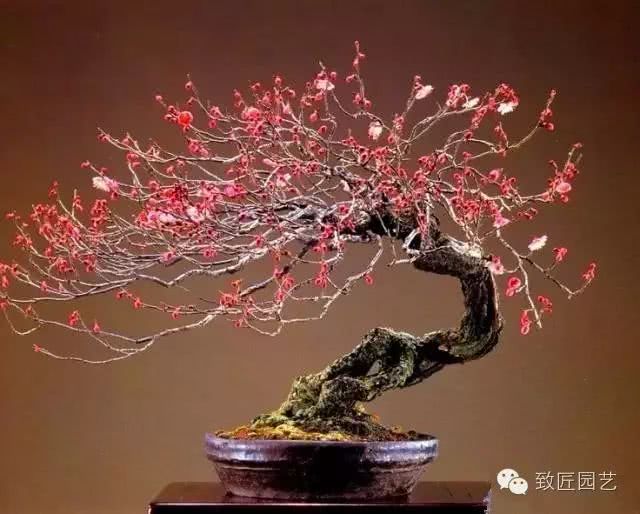The important effect of Illumination on Bonsai

Some flower bonsai lovers often pay attention to the effects of fertilizer, soil and water on plant growth and development, but ignore the different needs of different kinds of flowers and trees for the intensity and duration of sunlight, thinking that as long as all flowers and trees are preserved in the sun, they can grow well. In fact, if not according to the different needs of different flowers and trees, grasp the light intensity and light time, even if watering, fertilization and soil are suitable, flowers and trees can not be raised well.
Light is the energy source for green plants to carry out photosynthesis. if there is no light or light can not meet the requirements of plants, chloroplasts will not be able to convert carbon dioxide and water into carbohydrates and oxygen, and it will be difficult for plants to grow and develop. however, due to the different intensity of sunlight in the place of origin, their genetic factors are also different, so there are different requirements for light intensity and irradiation time.
According to this characteristic of plants, the demand for light of flowers and trees can be divided into four categories:
1. Positive flowers and trees
This kind of flowers and trees like strong light (but not the stronger the better, generally should not exceed 35C), do not tolerate shade, and can grow and develop normally and blossom and bear fruit in full sunlight. If the light is insufficient, the growth will be poor, the branches and leaves will grow, and the color of the leaves will become lighter, while the flowers that bloom and bear fruit will be difficult to conceive, bloom and bear fruit. Even if they can open a small number of flowers, the flowers will be smaller than those with normal light, with a light fragrance and withering quickly. If there is not enough light for a long time, it can also lead to serious poor growth or death. Such flowers and trees are pomegranate, plum blossom, rose, magnolia and so on.
2. Neutral flowers and trees
This kind of flowers and trees have strong adaptability to light intensity and have a large variable range of sunshine requirements, but they do not grow well under strong light or shade conditions. Therefore, they should be sunny in spring and autumn and slightly shaded in hot summer. Such flowers and trees are sweet-scented osmanthus, oleander, wax plum and so on.
3. Negative flowers and trees
These plants grow well under the condition of insufficient light or scattered light. Generally required to sprout about 30%, can not withstand strong light, otherwise poor growth. These plants are originally found in tropical rain forests or on the back of high mountains and in the shade of trees, such as rhododendron, camellia, evergreen and so on.
4. Strongly negative flowers and trees
This kind of plant is less adapted to strong light than negative flowers and trees, and the shade must reach about 80% in order to grow well, such as orchids and fern sandalwood.
According to the daily sun exposure time required for various flowers and trees to blossom, they can be divided into the following three categories:
(1) long sunshine flowers and trees. Such as gladiolus, impatiens and so on. Most of this kind of flowers and trees are native to temperate and cold zones, and their growth flourishes in summer. It takes more than 12 hours of light a day to conceive buds and blossom, otherwise they will not blossom.
(2) medium Rizhao flowers and trees. Such as carnation, cyclamen, rose, etc., this kind of flowers and trees are not sensitive to the length of sunshine, regardless of long or short sunshine, as long as the temperature is suitable, it does not affect flowering.
(3) short-day flowers and trees, such as chrysanthemum, poinsettia, magnolia, etc. Most of these flowers and trees are native to the tropics or subtropics, and they can accelerate their growth and flowering as long as the daily light does not exceed 10 hours (about 8 hours a day). If the daily sunshine time is less than 10 hours, the flowering will be delayed.
When mastering the light, we should also realize that the so-called "negative positive" of flowers and trees are relative, and negative flowers and trees do not need sunlight at all. The growth of most plants in the world needs a certain amount of sunlight, but the amount and strength are different. Even some positive flowers and trees, in the hot summer, can not be allowed to be exposed to the sun (refers to small and medium-sized bonsai plants planted in shallow pots), need to be properly shaded, otherwise it will also have an adverse impact on their growth.
When talking about light, the scientific experiment of the most wonderful effect of moonlight on flower pots can not be ignored. Moonlight is beneficial to the growth and development of flowers and trees. When the moon is full, its light is equivalent to the illuminance of a 40-watt lamp at a distance of 15 meters. Although the moonlight is weak, it can promote the growth of some flowers and trees. Gardenia has the strongest aroma in the strong moonlight. Azaleas bloom better in the moonlight. At present, some countries are exploring the effect of moonlight on the growth of flowers and trees.
In addition, in the case of insufficient natural light, in order to make flowers bloom regularly, artificial light (that is, electric light) is often used to supplement, and better results can also be obtained.
Wonderful content
- Prev

These four kinds of flowers will lead to quick rooting, easy survival, rapid growth and explosive pot of cuttings in summer.
These four kinds of flowers have to be cut in summer, which take root quickly and easily survive, and grow quickly and easily "explode" pots! Rhododendron is a famous flower in China, which can be called the queen of flowers. It has many colors and charming shapes. The hot and humid environment in summer is suitable for du.
- Next

Drop 2 drops into a rich bamboo bottle. Its root system becomes a beard once a month.
Rich bamboo is a kind of foliage plant often raised at home, which is kept in the living room or bedroom, which is a good choice, which can not only beautify the environment, but also add vigor and vitality. As the saying goes, "grow flowers and grow roots first". Rich bamboo wants not to have yellow leaves.
Related
- Wuhan Hospital Iron Tree Blooming Result Was Instantly Frightened by the Gardener Master
- Which variety of camellia is the most fragrant and best? Which one do you like best?
- What is the small blue coat, the breeding methods and matters needing attention of the succulent plant
- Dormancy time and maintenance management of succulent plants during dormancy
- Minas succulent how to raise, Minas succulent plant pictures
- What are the varieties of winter succulent plants
- How to raise succulent plants in twelve rolls? let's take a look at some experience of breeding twelve rolls.
- Attention should be paid to water control for succulent plants during dormant period (winter and summer)
- Watering experience of twelve rolls of succulent plants
- Techniques for fertilizing succulent plants. An article will let you know how to fertilize succulent plants.

